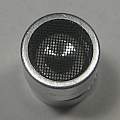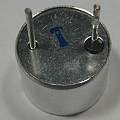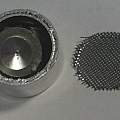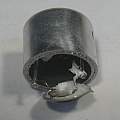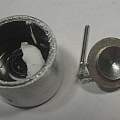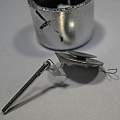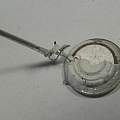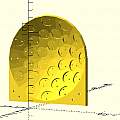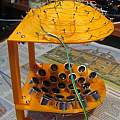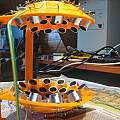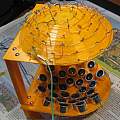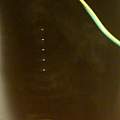Started 17th December 2018
I first saw ultrasonic acoustic levitation in [1], but the group [2] have made it easy to do. Here I build their "MidLev" design.
I bought 60 transmitters from "Piezoelectric ceramic ultrasonic sensor TC40-16T/R transceiver 40KHz 16 mm split T and R". Following [2] I was surprised that these have undefined polarity. The pins on the back are polarised, but how the insides are connected to them varies. I connected a receive transducer to my 'scope and then connected each transmitter to a signal generator and sorted them based on the resulting trace. I 3D printed a tube (test spacer download below) to hold the two transducers a fixed distance apart. It was apparent that some transmitters produced more output than others, one produced no output at all, and I pulled it to pieces.
For more and better tearing down see [3] and for an explanation of how they work see [4].
The original MidLev is designed to be printed in one big piece. I have split it into a number of parts - two bowls, held apart by two supports and standing on two feet. The three OpenSCAD files below render these three items, they're actually the same file with different parts commented out.
To make this work I have a small object under the middle of the bottom bowl. It would have been better to have continued a bit further and had four supports and feet.
Downloads:
Photos of my build using the above files.
I put an Atomizer in the bottom of the levitator, this is an ultrasonic disc which produces tiny droplets of water. The video below shows what happens, immediately small drops of water form and are levitated. It's a bit disappointing that nothing else happens - the drops don't get bigger with more time.
On the original video, with a bit of imagination, as the mist clears, one can pick out the standing waves in space, see the single frame below.
There is a better way of seeing the standing waves - Schlieren optics [6]
References:
